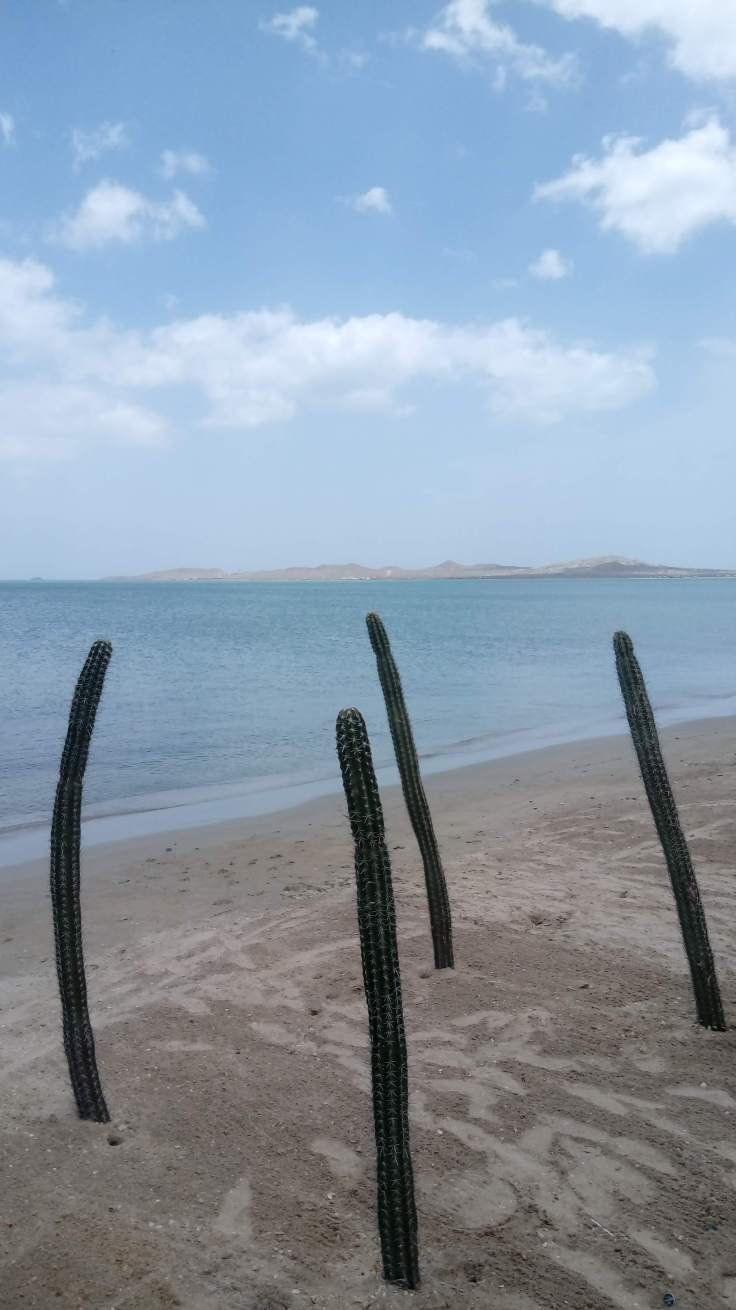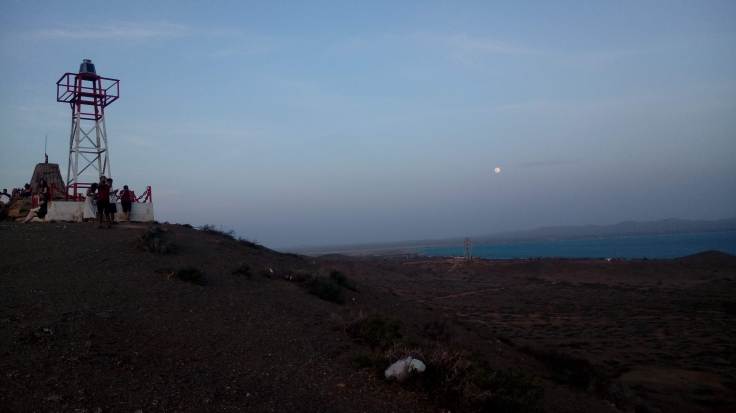The next few posts come after we have completed our trip. During the last few weeks of our travel we were fully engrossed by the experience – that, and writing on a mobile phone sucks – so writing was unceremoniously chucked to the side. Our apologies for that, seeing as we have now heard that people actually read our posts. We have, however, enjoyed putting this journey into words and it leaves us with something to look back on later. That, and we will hopefully head towards Papua New Guinea after this, so the writing practice is rather welcome.
Entonces, without further ado we would like to share with you the rest of our trip.
After an arduous – but rewarding – journey to the Lost City, we once again packed our bags and found ourselves beside the road, waiting for transport to come around our corner of the road. As a large Brasilia bus rounded the corner, Lina jumped up to wave it down. Unperturbed, the bus roared past us, ignoring Lina’s efforts. We remained unfazed, we kept our eyes trained on the corner, waiting for the next opportunity. Our ride finally arrived in a flash of red and orange, the image of a Phoenix cast along the side of the vehicle. The Phoenix kindly responded to Lina’s outstretched hand, and took us in.
As the beast lifted off and raced towards the north we were struck by the sudden change in the landscape that shot by. The rich greens of the forest gave way to the brown of sand and rock. The trees became skeletal, with only white plastic bags adorning their branches as foliage. We had clearly entered the area known as La Guajira – the northern most area of Colombia – distinguished by its desert areas.
We said goodbye to our trusty steed in Riohacha – which we will write more about in a separate post – a small town that we had decided to use as a stepping stone to head further north. As luck would have it, Bill – the owner of the hostel we had booked at – had the perfect solution for us. Together with four amazing people we met at the hostel, we headed out to see the northern most point of South America.
Our journey commenced with us being herded into two cars that promptly sped of at a steady 130km/h. Signs along the road mocked us with warnings to watch out for cows and to maintain a maximum speed of 50km/h. The drivers naturally took no heed, expertly dodging cows and dogs with whom we shared the road.
The drive ended in Uribia, a small town that works as a cross-road for transport to the rest of la Guajira. The chaos here was not unlike that of New Delhi, as cars, motorbikes, rickshaws, and people all moved towards their own destination – seemingly without taking any heed of the traffic around them. We watched trucks enter the city that were so packed with people, that they were hanging off the side-view mirrors. As you might suspect, it all flowed through each other perfectly, and our driver masterfully rode the wave of chaos to the next pick up point. There, we were loaded into two four wheel drive cars which would take us to Cabo de la Vela, the first resting spot of our trip into the desert.
The drive there was stunning. As you leave behind the buzz of Uribia everything slowly falls away. First, you exchange a smooth tarmac road for a dirt road. Then, the number of vehicles diminish until you are the only vehicle left on the road. Finally, the road itself drops away and you are left driving along a seemingly endless flat plane of rock and sand. The heat warps the distant earth, making it dance, creating the typical illusion of water tirelessly retreating from your approach. Our driver seemed to find landmarks invisible to our eyes. Making turns in an otherwise unmarked flat plane, he confidently drove us to our destination.

Cabo de la Vela is a small desert village that is a popular destination for kite surfers. Arriving there you immediately understand why. The sea is flat and unmoving, providing a perfect surface to glide across. Additionally, there is an almost constant rush of wind flowing over the surface of the water. Standing in the motionless water, surrounded by cacti, sand, and wind was an amazing experience. It is difficult to describe, but it felt like we had managed to catch up with the retreating illusion of water. Being in the middle of the desert in this motionless salty water felt a little surreal.

Shortly after arriving at Cabo de la Vela, we headed off to the three tourist highlights of the area. First was Pilon de Azucar, a lookout point at the edge of the sea that provides stunning views of the land and water around it. The consistent wind that we had earlier experienced reached new heights here. The wind roared around us wildly, as if trying to reclaim the hill that we had ventured upon.



After having been thoroughly saturated by the views of Pilon de Azucar, we were dropped off at a beach close to El Faro (the lighthouse). We were greeted here by children offering cheap Venezuelan beer. I admit that it was somewhat strange to buy a beer off a child, and it was a reminder to us of some of the socio-economic issues of the area. We would not want to simply categorize and generalize this situation here, as we clearly do not have the appropriate knowledge for it. However, it did leave us with a discussion that we have not yet resolved to date (see what we learned at the end of this post).
With said beer in hand, we made our way down the cliffs to the beach. Standing at the edge of the sea, we watched pelicans dive gracefully into the water, emerging victorious with bloated beaks. The sun had been slowly receding towards the horizon and now cast shadow-like backdrops of the birds in the flying through air.

The last part of the tour was completed at El Faro, a small lighthouse – or tower – on a hill looking out over the sea. From here we watched the sun go down before heading back to our hostel. The next day we would head out towards Punta Gallinas, the northern most point of South America.

What we learned:
- Ask around for the prices of your ongoing journey beforehand. The bus will often ask for more and – if you already know what the price should be – you can kindly ask him/her to readjust the price accordingly.
- If you have the time, pass through Riohacha to plan the rest of your journey north. Chances are the hostels will know someone offering cheaper alternatives compared to the larger tour agencies, and easier options than trying to catch transport from Uribia yourself. Naturally, if you want a bit more adventure, find that truck in Uribia and ride the side-view mirror north.
- So why does it feel wrong to have a child sell you alcohol? Would it be different if they had sold us a soda for example? And – maybe more interesting – we refused to buy anything when a three year old boy asked us. So, if buying alcohol off a child is OK for you, at which age do you draw the line? Naturally, the best thing would be if the child didn’t have to sell anything because their family had enough resources, so they only had to worry about kid stuff. However, that is not the discussion here. What if you know for sure that the child does not drink any of the product (beer or soda) does that change anything? The main question here is: Is there really a difference between selling soda or beer? And if so, what makes that difference? Is it the possibility that the child might drink the beer, or is it the act of buying alcohol from a person who is not at an age at which we feel they should be allowed to have it. We do not have an answer, just an opinion about this and find it to be an interesting discussion point. To reiterate, this is not a discussion about the ethics of child labour in general (if you want more on that, Lina wrote an entire research paper about the pros and cons), just the difference between the products children can sell.
- Sleeping in a tiny hammock sucks, ask for the bigger hammocks (Chinchorros) when possible. More about Chinchorros in the next post.
- The dogs at Cabo de la Vela were crawling with Ticks, we have never seen so many ticks on one animal. In other words, we would keep our distance from the dogs there. Also, DEET helps to repel ticks.
Much love,
S&L

Leave a comment